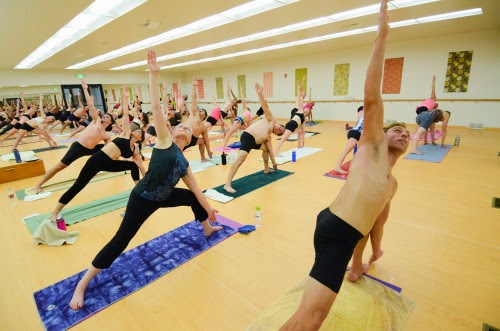PHOTOGRAPH BY JACK RADCLIFFE/GETTY
Have you ever wondered what is running through your yoga teacher’s mind during class? Is she eyeing you up and down, calling out in her head everything that’s wrong with your health? What exactly does she know just by looking at you and your practice?
And what other intel are instructors privy to? We tapped some of our yoga teacher friends to find out just what they can say about you and your health based on your practice.
1. What Other Sports You Play
PHOTOGRAPH BY JUSTIN STEELE
For example, runners often have tight ankles and struggle with postures that involve sitting on their knees, such as Bikram’s Fixed Firm and Child’s Pose.
2. If You've Had Knee Injuries
PHOTOGRAPH BY MARGARET SKROVANEK
The signs? You’re hesitant to put all your weight on one leg, you struggle with balancing postures, and you’re reluctant to straighten your knees.
3. You Might Have A Weak Lower Back
If you go off into a corner to start Savasana early while everyone else is doing backbends, you probably consider the area above your sacrum a trouble spot.
Pro tip: Teachers say that more back injuries actually occur from forward bends.
4. You're Type A
PHOTOGRAPH BY MITCH MANDEL
Being overly ambitious and pushing through poses beyond your current ability—a telltale sign that you’re a Type A personality—will likely end up hurting more than helping. But remember: Some of the most beneficial poses aren’t necessarily the acrobatic ones. In some traditions, Savasana offers the most benefits to body and mind.
5. You've Had Too Much Caffeine
PHOTOGRAPH BY RODALE IMAGES
If you’re fidgety, falling out of balancing poses, and constantly looking around you, too many cups of morning coffee might be the culprit of your lack of focus.
PHOTOGRAPH BY LIVESTOCK IMAGES/GETTY
If you’re extra slow to get into postures, can’t keep up with the flow, and are taking frequent breaks, you’re likely suffering from a late night out. (The other telltale sign is the smell of booze that oozes from your skin.)
7. You're Having a Bad Day
PHOTOGRAPH BY 123DUCU/GETTY
Teachers say that not looking in the studio mirror at all throughout class is a sign that you might be feeling a little down in the dumps.
8. You Need to Poop
PHOTOGRAPH BY ALEX BRAMWELL/GETTY
Wind-removing poses (lying on your back, hugging knees to chest) and inversions (Shoulderstand and Plow) are the most likely triggers for passing gas in class.
9. How Often You Practice
PHOTOGRAPH BY JONATHAN FIFE/GETTY
Are you eager to hit the mat when you get to the studio? Do you move through postures with ease? Do you geek out about yoga in the lobby after class instead of planning post-yoga drinks? If you answered yes, then you’re likely a frequent yogi.
PHOTOGRAPH BY ALEX GRABCHILEV/EVGENIYA BAKANOVA/GETTY
If you move too quickly through poses, constantly look in the mirror, and appear to be in competition with the people around you, you might be guilty of being egotistical.




















